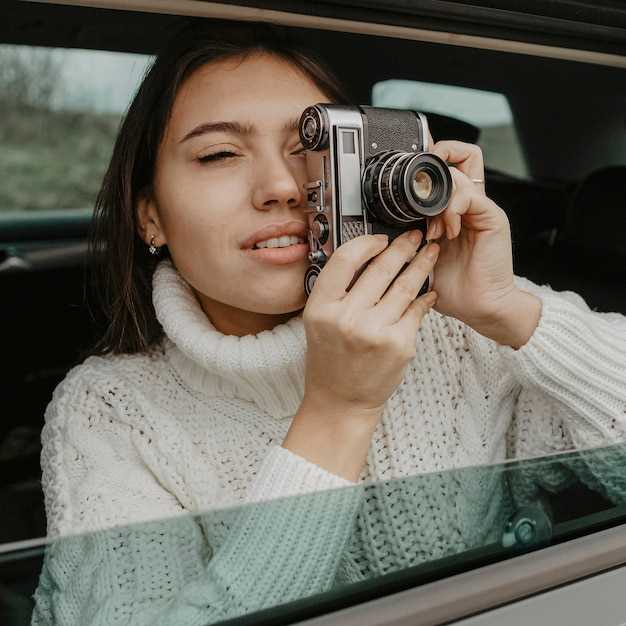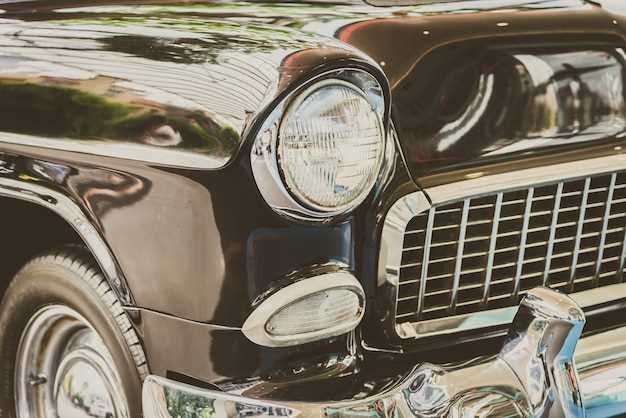
When it comes to selling vintage cars, first impressions matter immensely. High-quality photographs can significantly influence a potential buyer’s decision, allowing them to truly appreciate the beauty and craftsmanship of classic automobiles. In a marketplace saturated with automotive options, effective sales strategies hinge on clear, compelling photography that highlights the unique allure of each vintage vehicle.
Understanding the right techniques to capture these iconic cars can elevate your sales efforts. Proper lighting, angles, and backgrounds play a crucial role in portraying the character and nostalgia that vintage vehicles embody. This article will guide you through essential photography tips tailored specifically for showcasing vintage cars. By honing your skills and employing best practices, you can create stunning images that not only attract attention but also drive sales.
Additionally, exploring the nuanced details of each vehicle, from chrome accents to interior finishes, can help potential buyers envision themselves behind the wheel. Implementing these photography tips can make your vintage vehicle listings stand out, ultimately increasing interest and facilitating successful sales. Let’s dive into the essential strategies that will help you master the art of vintage car photography.
Choosing the Right Lighting for Classic Car Photography

When it comes to photographing vintage vehicles, lighting plays a crucial role in highlighting their unique features and enhancing overall sales appeal. The right lighting can transform a simple car photo into a captivating image that attracts potential buyers.
Natural light is often considered the best choice for classic car photography. Early mornings and late afternoons, known as the golden hours, provide soft and warm light that reduces harsh shadows and brings out the beauty of a vehicle’s curves and details. This type of lighting can also add a nostalgic feel to the photos, aligning well with the essence of vintage cars.
In contrast, photographing in direct sunlight at midday may create unflattering shadows and overexposed highlights. To combat this, consider using diffuser panels to soften the harsh sunlight. Alternatively, seek shaded areas to provide a more balanced lighting environment while maintaining the natural aesthetic.
Artificial lighting can be beneficial in controlled settings, such as studios. Using softboxes or LED lights positioned at various angles allows for precise control over the light, enabling the photographer to create striking reflections on the car’s body. Experimenting with different setups can help achieve the desired mood and effect in the photos.
Reflectors can also be a valuable tool in your lighting arsenal. They can bounce light onto the vehicle, filling in shadows and highlighting intricate details. This technique is especially useful when shooting in less-than-ideal conditions or when capturing shots from lower angles.
Ultimately, the goal of classic car photography is to create images that not only showcase the vehicle’s design but also evoke an emotional response from potential buyers. By mastering the art of lighting, you can elevate your car photos, making them more compelling and increasing their likelihood of sparking interest and driving sales.
Framing Techniques to Enhance Vintage Car Features

Framing is a crucial element in photography that can significantly influence the perception of vintage cars in your photos. Proper framing techniques can help highlight unique features, making the vehicle more appealing to potential sales prospects.
Utilize the Rule of Thirds: This technique involves dividing the image into a 3×3 grid. By positioning key elements of the car along these lines or at their intersections, you create a more balanced composition. For instance, placing the front of the car at one of the intersecting points can draw the viewer’s eye and enhance the overall appeal of the photo.
Incorporate Leading Lines: Use natural lines found in the environment, such as roadways or fences, to lead the viewer’s eye toward the vintage vehicle. This technique not only frames the subject but also adds depth to the image, providing context that emphasizes the car’s design and history.
Frame Within a Frame: Look for objects that can act as a frame around the car, such as arches, trees, or buildings. This approach directs focus towards the vehicle while adding layers to the photo. It creates a sense of depth and can evoke a particular emotion tied to the car’s vintage nature.
Experiment with Angles: Shot angles can dramatically change the perception of a vintage vehicle. Low angles can make the car look imposing and grand, while high angles can offer a comprehensive view of the vehicle’s features. Finding the right angle can highlight the craftsmanship and details that are important for sales.
By mastering these framing techniques, you can create compelling images that accentuate the beauty and uniqueness of vintage cars, improving their chances of attracting buyers in a competitive market.
Editing Tips to Highlight the Charm of Retro Vehicles
To truly capture the essence of vintage cars in your photos, effective editing techniques can enhance their unique appeal. Start by adjusting the lighting; a warm, soft glow can evoke nostalgia and make the vehicle stand out. Use dimming tools to enhance the shadows, creating depth and character in your images.
Next, consider utilizing contrast to highlight the details of the car. Increasing contrast can help emphasize the vintage textures, such as the glossy finish of the paint or the intricate designs of the dashboard. Carefully balancing highlights and shadows will draw attention to these charming features, making your vintage car photos more visually engaging.
Color correction is another essential step. Retain the original hues while enhancing them slightly to emphasize the retro vibe. For example, you might want to saturate colors that reflect the classic look of the vehicle, such as rich reds, deep blues, or muted pastel tones. This adjustment can enrich the nostalgic feel of the photograph.
Don’t hesitate to experiment with filters that add a bit of character. Vintage-style filters can bring out the charm of your vehicle by simulating the look of old photographs. However, use these sparingly to maintain the authenticity of the car.
Finally, cropping your photos effectively can change the whole perspective of the vintage car shots. Focus on interesting angles and details that showcase the car’s distinctive features, such as the headlights or the tailfin. This approach helps potential buyers appreciate the vehicle’s craftsmanship and character.


